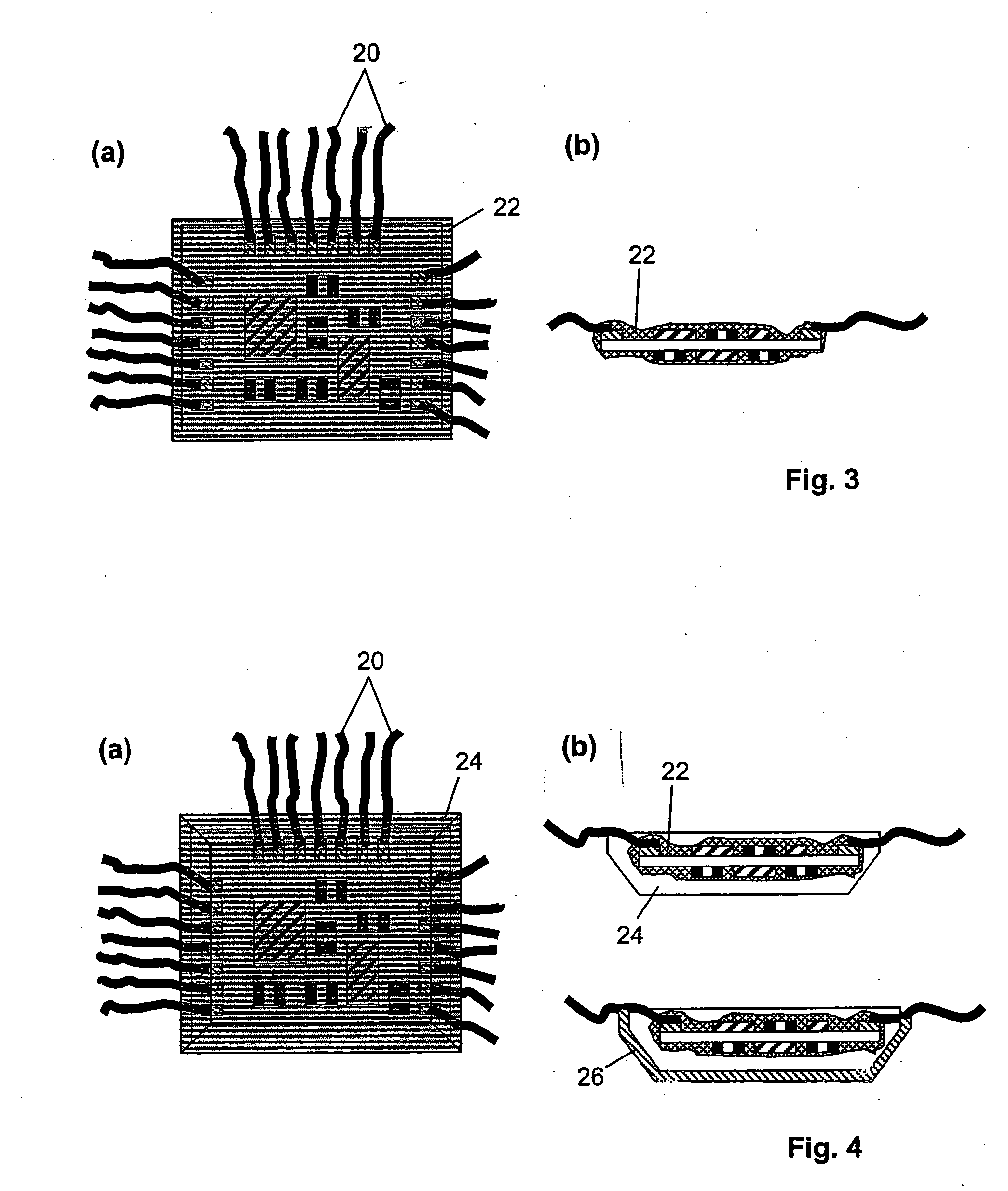Method and apparatus for the integration of electronics in textiles
a technology of electronics and textiles, applied in weaving, non-metallic protective coating applications, semiconductor/solid-state device details, etc., can solve the problems of affecting the use properties of textiles, limiting the integration of electronics into textile surroundings, and commercially available electronic modules in textile environments are not very flattering, etc., to achieve simple and secure mechanical connection of components, high mechanical and chemical resistance of the apparatus, and simple mechanical connection
- Summary
- Abstract
- Description
- Claims
- Application Information
AI Technical Summary
Benefits of technology
Problems solved by technology
Method used
Image
Examples
Embodiment Construction
[0038] In FIG. 1, an electronic component 8 which is to be integrated into a textile environment is illustrated in plan view (a) and in sectional view (b). The electronic component 8 has a single-layer or multilayer epoxy circuit board 10. A ceramic board or a similar supporting apparatus can also be used equally well. On the circuit board 10 there are, for example, a large number of individual passive 14 and active 16 components or electronic modules. The power supply and the data input and output are carried out via a large number of preferably regularly spaced contact points 18 which, for example, are formed as bond pads or soldering platforms. The electronic component 8 is preferably as small as possible, in order in this way to stiffen only a small area in the textile environment and—as shown in the sectional view FIG. 1(b)—is fitted on both sides if necessary.
[0039] In FIG. 2, the electronic component 8 according to FIG. 1 is shown in plan view (a) and sectional view (b), thi...
PUM
| Property | Measurement | Unit |
|---|---|---|
| Temperature | aaaaa | aaaaa |
| Diameter | aaaaa | aaaaa |
| Diameter | aaaaa | aaaaa |
Abstract
Description
Claims
Application Information
 Login to View More
Login to View More - R&D
- Intellectual Property
- Life Sciences
- Materials
- Tech Scout
- Unparalleled Data Quality
- Higher Quality Content
- 60% Fewer Hallucinations
Browse by: Latest US Patents, China's latest patents, Technical Efficacy Thesaurus, Application Domain, Technology Topic, Popular Technical Reports.
© 2025 PatSnap. All rights reserved.Legal|Privacy policy|Modern Slavery Act Transparency Statement|Sitemap|About US| Contact US: help@patsnap.com



